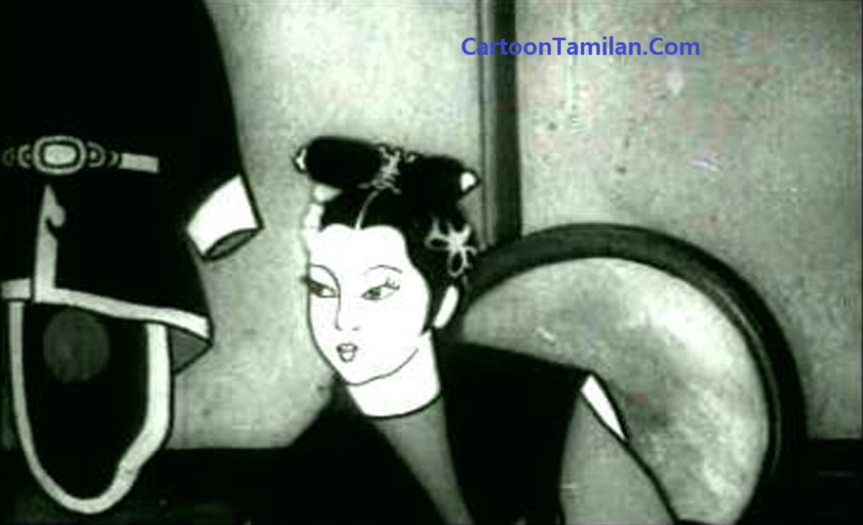🎥 The Epic That Started It All: Princess Iron Fan — China’s First Animated Feature Film

Alright, listen up.
Before Disney’s Bambi cried his way through forests, before anime became the pop-culture monolith it is today, before the internet could even argue over sub vs dub — China made a freakin’ full-length animated movie in 1941.
Yes. You read that right.
Nineteen. Forty. Freakin’. One.
While the world was literally burning in war, while Japan had already invaded parts of China, while artists were fleeing bombings and food shortages — two brothers said,
“Yeah okay, but what if we animated a legendary Chinese tale using nothing but sheer willpower and a hell of a lot of ink?”
That movie?

《铁扇公主》 / Princess Iron Fan.
🗡🔥👸
The first feature-length Chinese animated film.
The first donghua of its kind.
And if you’ve never heard of it before — you’re not alone.
But that’s why we’re talking about it.
Who Made It?
The legendary, underappreciated kings of Chinese animation:
Wan Laiming and Wan Guchan — aka the Wan Brothers.
These guys weren’t just animators. They were pioneers. Rebels with brushes. Dreamers sketching magic while bombs fell outside. Four brothers, actually — but Laiming and Guchan are the big names tied to Princess Iron Fan.
Imagine trying to make a hand-drawn animated movie with barely any equipment, no CGI, no budget, and literal war happening around you. And yet… they did it. Frame by frame. Cel by cel. 20,000 individual drawings.
Let that sink in.
What’s It About?
Okay, so Princess Iron Fan is based on a small arc from the classic Chinese epic Journey to the West (yeah, the one with Monkey King, Tripitaka, Pigsy, all those wild characters).
In this part of the story, the heroes are trying to cross a mountain that’s ON FIRE (because of course it is — this is Journey to the West, everything’s dramatic).
The only way to stop the flames? A magical fan.
Owned by a princess.
Named… yup… Princess Iron Fan.
But this princess? She’s not friendly. She’s not just handing over that fan like it’s a loaner umbrella. She’s powerful, stubborn, and kinda vengeful.
So the heroes — especially Monkey King — gotta trick, battle, and outsmart her to get that fan and move forward on their journey.
The story’s tight, the themes hit, and it’s packed with that old-school mythological fire.

Why It Blew Everyone’s Mind
Let’s talk context for a second.
In 1941, most people in China hadn’t even heard of a cartoon that lasted more than 10 minutes. Animation was mostly tiny shorts, black and white, and experimental.
Then this film drops — 73 minutes long.
A full-on movie.
With character arcs.
Battle scenes.
Dramatic music.
Complex facial expressions.
Hand-drawn flames and wind and explosions.
In the middle of a war.
On a fraction of a Disney budget.
With no blueprint to copy from.
And it worked. It floored people.
It wasn’t just a movie. It was hope. In a time when the country was fractured and struggling, this film felt like, “Hey, we can create too. We can build something beautiful. We’re more than just war headlines.”
The Influence Was Huge (Even Globally)
You’d think something this important would be super famous, right?
But nah. History did it dirty.
Here’s the wild twist though — Japan saw Princess Iron Fan… and it inspired their own animation revolution.
Like for real — it influenced early Japanese animators, including the guy who would later direct Japan’s own first feature-length anime, Momotaro: Umi no Shinpei, in 1945. That’s technically the first Japanese anime movie.
So yeah. Before there was Studio Ghibli. Before Akira. Before Astro Boy.
There was Princess Iron Fan.
A Chinese film. Made by two brothers with brushes, dreams, and zero chill.
China literally helped inspire the thing Japan became famous for.
Let that marinate.
But It Wasn’t All Glory
The film was released in Shanghai, under Japanese occupation. Yeah. Messy.
There were conflicts over credit, problems with censorship, political tension, and the fact that China was in the middle of World War freakin’ II didn’t help.
After the war, the industry kind of… froze.
The Wan brothers tried to keep going, but it was hard.
Art needs peace to grow. And peace was in short supply.
Even now, Princess Iron Fan isn’t talked about enough.
No Netflix remasters. No viral TikToks.
Just a few old reels, some blurry YouTube uploads, and dusty articles.
And honestly? That’s tragic.
Watching It Now (Yeah, You Still Can)
You can watch it now. Just don’t expect HD.
It’s black and white.
The audio’s fuzzy.
The animation’s jerky in spots.
But the soul?
Oh man. It’s still there.
You’ll feel the hand-drawn heart in every frame.
You’ll feel the desperation, the love, the need to create.
You’ll feel the fingerprints of artists who had nothing… but made something unforgettable anyway.
It’s haunting.
And somehow… inspiring as hell.

Why It Still Matters Today
Because before the world cared about anime or donghua or animation from Asia at all — there were artists in Shanghai saying,
“Let’s tell our stories. Let’s put mythology on screen. Let’s do the impossible.”
Princess Iron Fan is where it started.
It’s the origin story of Chinese animation.
And if you love Mo Dao Zu Shi, Heaven Official’s Blessing, Link Click, or Fog Hill of Five Elements — then you owe this film a nod.
Because without Princess Iron Fan, we might not have gotten any of them.
Final Thoughts: Give It Its Damn Flowers
Look… you don’t have to love it. It’s old. It’s rough around the edges.
But you should know it.
Because Princess Iron Fan isn’t just China’s first animated film.
It’s a miracle in motion.
It’s history. Culture. Defiance.
It’s the birth cry of an industry.
And the fact that two Chinese brothers made it while warplanes flew overhead?
Bro… that’s not just animation.
That’s legend.

